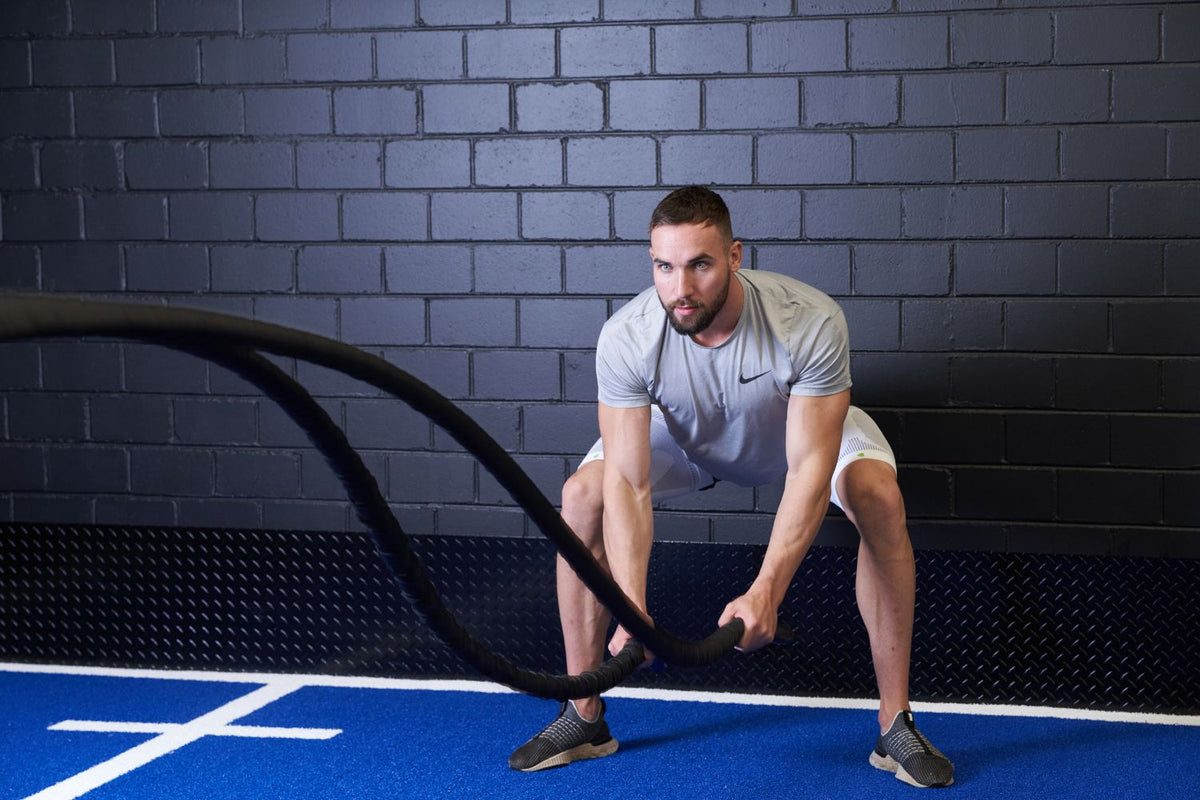7 Ways to Maximise Your Workouts

Do you have a workout resolution? Whether you want to start your fitness journey in the new year or optimise your current workout plan, we’ve got you covered. From mindset to music to the best rest periods, here’s everything you need to know to maximise your workouts.
Get into a positive mindset
When you get to the gym or start preparing for a workout at home, take a moment to breathe and clear your brain. You want your focus to be on getting the most out of your workout, not work stresses or all the chores you have yet to do. After all, it’s hard to put in 100% if you’re dwelling on negative thoughts.
Listen to your favourite music

Studies show that music is a great way to improve your workouts. Listening to your favourite tunes can:
- Make your workout more fun, making you more likely to stick to your planned reps and sets instead of calling it quits
- Distract you from feelings of fatigue, helping you work out harder and longer
- Boost your mood, achieving that positive mindset
Plan ahead and stay flexible
Having a clear workout plan is a good idea so you don’t waste time thinking about what to do next. It’s also a good idea to stay flexible - i.e., stick to elements of your plan without following it to the letter.
Essentially, the more preparation you do and the more guesswork you cut out, the more effectively you can work out and the quicker you can achieve your goals. With that in mind, you want to stick as close as possible to these rest periods:
- Hypertrophic (aesthetic) training goal: 30-90 seconds
- Strengthening: 2-5 minutes
- Building endurance: 30 seconds
If you work out at the gym, take some time to map out the locations of the equipment you’ll need. If all the benches are occupied, you should also be ready to switch to plan B (for example, doing rows instead of bench presses).
If you work out at home, you’ll obviously have much better access to equipment. But a workout plan is still a good idea so you can rest and transition when needed.
Wear sports compression to maximise your workouts
Sports compression garments like Arm Sleeves reduce the rate of muscle fatigue and improve how you move, helping you work out better and longer.
The compression knit fabric gradually compresses the arm, stimulating the muscle and squeezing the veins to improve circulation - essentially moving deoxygenated blood out of congested veins and letting the arteries supply more oxygenated and nutrient-rich blood. As the muscles get what they need faster, they keep working longer.
Compression also uses precise pressure points to help motor nerves transmit messages to and from the brain. With better kinesthetic awareness, you can improve how you do your exercises - squat deeper, activate large muscle groups instead of smaller ones faster to fatigue, and exercise more confidently as your movement mechanics improve.

Sports Compression Arm Sleeves
Try wrist straps for weightlifting
Sports wrist straps have a slightly different set of benefits than compression sleeves. But like compression sleeves, they work to improve your workout intensity. When worn, they apply pressure to the wrists, helping stabilise the joints and even strengthen your grip. Hence, you’ll be able to lift heavier weights even if your wrists have trouble keeping up.
Keep it simple
Put simply, the fewer exercises in a workout session, the better your workout and overall progress.
Stick to a couple of pieces of equipment per workout to avoid running around or waiting for someone to free up a machine. While taking a rest is essential to catch your breath and improve your performance in the next exercise, you don’t want to leave it too long, or you’ll lose some of your progress.
Limit the number of exercises you do. While you can vary the amount slightly depending on your goals and fitness level, the general rule is 3-5 exercises per workout session. This amount ensures the best progressive overload (i.e., gradually increasing your reps, sets, or weights) - without risking an overuse injury or slowing your progress. Also, depending on your goals, you can do compound exercises that target several muscle groups (for example deadlifts), full-body exercises (like burpees), or isolation exercises targeting a specific muscle (like hamstring or bicep curls).
Fuel up
A 1-hour gym session can eat through a lot of calories, so you want to come prepared. Remember, exercising on a calorie deficit or without sufficient glycogen stores to provide energy will result in more fatigue and worse performance. Eat plenty of carbs within a couple of hours of your session so your body has sufficient energy to draw from as you go through your sets and reps.
If you’re feeling hungry before you hit the gym, eat a high-carb, low-protein snack. Protein takes a longer time and more energy to digest, which can result in a quicker rate of muscle fatigue.
For the best outcomes, drink or eat protein AFTER your workout (preferably within 30 minutes), as this offers the best window for protein uptake in the muscle.
To sum up
You’ll need to take a few steps to maximise your workouts, including eating carbs beforehand and proteins after, wearing supports, timing your rest intervals, and sticking with a few foundational exercises. But as long as you stick to this plan, you’ll start seeing improvements!
Explore more sports supports: Performance
If you require assistance selecting the right product for your needs or wearing the brace, call us on 1300 668 466 or contact us via live chat.
Do you have private health? Most private health extras will cover Bauerfeind Products. Check to see if yours is included. Bauerfeind Private Health Insurance Inquiry.



